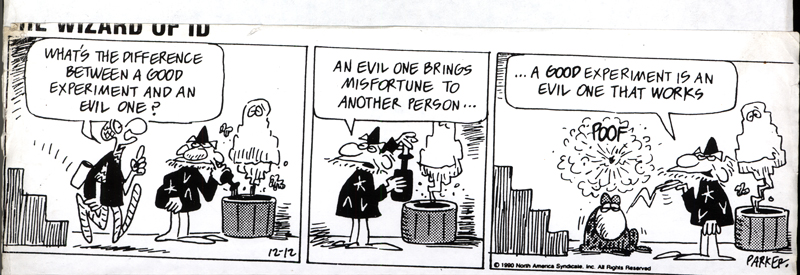cnidocyte
Hazard to Others
  
Posts: 214
Registered: 7-7-2010
Member Is Offline
Mood: No Mood
|
|
Burning sulphur
I just ignited a bit of elemental sulphur and watched it melt into a viscous, blood red liquid. I didn't see any gas but I could smell it. What was
this red liquid? Could it be SO2 dissolved in moisture that was present in the sulphur powder?
|
|
|
Picric-A
National Hazard
   
Posts: 796
Registered: 1-5-2008
Location: England
Member Is Offline
Mood: Fuming
|
|
This red liquid is molten sulphur. Sulphur dioxide is a colourless gas.
|
|
|
woelen
Super Administrator
        
Posts: 8012
Registered: 20-8-2005
Location: Netherlands
Member Is Offline
Mood: interested
|
|
Quote: Originally posted by cnidocyte  | | I just ignited a bit of elemental sulphur and watched it melt into a viscous, blood red liquid. I didn't see any gas but I could smell it. What was
this red liquid? Could it be SO2 dissolved in moisture that was present in the sulphur powder? |
When sulphur
is heated, then first a red liquid is obtained, which is quite mobile. If heating becomes stronger, then the liquid becomes more and more viscous
until it become a slowly moving thick syrup. This is due to breakup of the S8-rings and catenation of the strings of sulphur atoms into large strings.
When heating further continues, then the strings of sulphur break up in shorter strings and the liquid becomes more mobile again.
When sulphur is heated to a temperature well beyond its maximum of viscosity, then it becomes more easy to ignite. It burns with a very small blue
flame and gives off mostly SO2 and a little SO3. You can actually see the little amount of SO3 formed. The burning liquid sulphur gives off a faint
smoke, hardly visible, but when sunlight shines on it, one can clearly see it.
|
|
|
condennnsa
Hazard to Others
  
Posts: 217
Registered: 20-4-2010
Location: Romania
Member Is Offline
Mood: No Mood
|
|
Quote: Originally posted by woelen  | When sulphur is heated, then first a red liquid is obtained, which is quite mobile. If heating becomes stronger, then the liquid becomes more and more
viscous until it become a slowly moving thick syrup. This is due to breakup of the S8-rings and catenation of the strings of sulphur atoms into large
strings. When heating further continues, then the strings of sulphur break up in shorter strings and the liquid becomes more mobile again.
When sulphur is heated to a temperature well beyond its maximum of viscosity, then it becomes more easy to ignite. It burns with a very small blue
flame and gives off mostly SO2 and a little SO3. You can actually see the little amount of SO3 formed. The burning liquid sulphur gives off a faint
smoke, hardly visible, but when sunlight shines on it, one can clearly see it. |
Damn, you know the work, you're like an encyclopedia.
|
|
|
cnidocyte
Hazard to Others
  
Posts: 214
Registered: 7-7-2010
Member Is Offline
Mood: No Mood
|
|
I didn't think the liquid form of an element could have such a different colour. Bright yellow to blood red. Its a pretty cool element sulphur. I
ignited it with a lighter and I couldn't see the flame but it would ignite the butane. I hear it burns way more intensely in a pure O2 environment.
I'm gonna test out burning a small quantity with an oxidizer like NaNO3.
|
|
|
woelen
Super Administrator
        
Posts: 8012
Registered: 20-8-2005
Location: Netherlands
Member Is Offline
Mood: interested
|
|
No, this is the result of years of experimenting and remembering/absorbing every bit if it, every detail 
This is how I built up knowledge of a lot of chemicals and their reactions. Doing things, observing things, remembering things....
|
|
|
The WiZard is In
International Hazard
    
Posts: 1617
Registered: 3-4-2010
Member Is Offline
Mood: No Mood
|
|
Iron goes through a number of colour changes when heated,
including purple, its colour an accurate indication of temperature.
Granted not an element — Zink oxide is white when cold -
yellow when hot.
djh
----
First rule of
laboratory glass -
hot glass looks
just like cold glass.
Anon.
|
|
|
cnidocyte
Hazard to Others
  
Posts: 214
Registered: 7-7-2010
Member Is Offline
Mood: No Mood
|
|
Quote: Originally posted by woelen  |
No, this is the result of years of experimenting and remembering/absorbing every bit if it, every detail 
This is how I built up knowledge of a lot of chemicals and their reactions. Doing things, observing things, remembering things....
|
This is the best way to learn IMO. When I just read about chemicals I often forget what I read but when I do an experiment, I remember the
observations for life.
|
|
|
The WiZard is In
International Hazard
    
Posts: 1617
Registered: 3-4-2010
Member Is Offline
Mood: No Mood
|
|
Quote: Originally posted by cnidocyte  |
This is the best way to learn IMO. When I just read about chemicals I often forget what I read but when I do an experiment, I remember the
observations for life. |

|
|
|